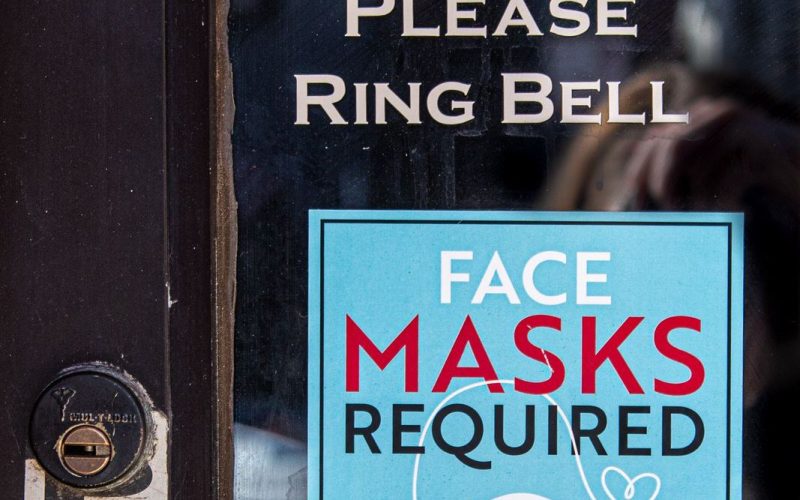by William Smead, Smead Capital Management
In the summer of 2020, we didn’t know quite a few things about how Americans would react when they got their social and entertainment choices back. We didn’t have vaccines yet and the media took everyone to the scariest place they could as they framed the future. Why are investors reacting in a similar way to this 2021 spike in positive cases? What opportunities does this create for the long duration common stock investor?
Between March and November of 2020, value investing and stock picking were pretty much left for dead. We had no way of knowing whether we’d get vaccines, we had no way to know if folks would ever go back to shopping in stores, going to entertainment venues, visiting casinos, taking airline flights and boarding cruises.
Now in 2021, we have a big spike in positive cases of the virus and the fear-mongering media is at the top of their game. Woe for us, visions of an everlasting virus dance in our heads and consumers and investors are reacting to this spike very much like they did last fall. How do we avoid stock market failure?
First, review the long-term chart of commodities versus stocks going back 250 years:

Source: Stifel Market Strategy Presentation to CSI Conference Jun-8, 2021
Commodities are likely to do dramatically better the next ten years. This means oil, lumber, copper and a wide variety of inputs could roar in price. Inflation has been let out of its bag and is unlikely to get put back in. Here is what Mohamed El-Erian says about where we are:
“The Fed’s new framework was designed for a world of deficient aggregate demand where supply was not an issue,” says Mohamed El-Erian, the chief economic adviser at Allianz SE and a Bloomberg Opinion columnist. “Coming out of the pandemic, we live in a world of ample demand where the main problem is on the supply side.”
Second, we don’t have to wonder whether people prefer being imprisoned in their own home or if they like to get out in the aforementioned social living. The suburban malls are packed, Macy’s and other retailers are racking up bigger sales gains than e-commerce (Source: MarketWatch).
Third, sentiment has been cleaned up among baby boomers, as represented by the American Association of Individual Investors:

Source: AAII Investor Sentiment Survey
More investors are bearish than are bullish and 67% are either neutral or bearish. This is not what you get at the top. At the top, it will be well more than 60% bullish if history is any guide!
Fourth, energy, mall REITs and banks are getting sold heavily like they did in 2020. Interest rates are in the microscopic 1.2-1.3% area and those bearish boomers are pouring money into bonds to try to maintain their income (confirming their negative equity sentiment). This flies in the face of what happened as people came out of their COVID prisons in May, June and July. We are using this pullback to get more committed to the inputs that millennials and worldwide consumers will demand when the virus becomes a dangerous nuisance like the flu.
Despite the low mortgage rates, the media is trying to convince stock buyers that the home builders have seen their best days in 2021. They say, “This is the best real estate market ever.” Or they worry that 3.5% or 4% mortgage rates would stop 90 million millennials from wanting a home. The biggest problem is they (media folks) are mostly too young to have seen the 1970s and 1980s when baby boomers bought homes at double-digit interest rates and inflation reached 11%.
Mark Hulbert showed us that you should be positive about stocks when consumers are scared abruptly and lack confidence. You should also forget about the stocks which need all of us to be imprisoned by the virus, because it will run its course and we now know what consumers really want.
Warm regards,

William Smead
The information contained in this missive represents Smead Capital Management’s opinions, and should not be construed as personalized or individualized investment advice and are subject to change. Past performance is no guarantee of future results. Bill Smead, CIO, wrote this article. It should not be assumed that investing in any securities mentioned above will or will not be profitable. Portfolio composition is subject to change at any time and references to specific securities, industries and sectors in this letter are not recommendations to purchase or sell any particular security. Current and future portfolio holdings are subject to risk. In preparing this document, SCM has relied upon and assumed, without independent verification, the accuracy and completeness of all information available from public sources. A list of all recommendations made by Smead Capital Management within the past twelve-month period is available upon request.
©2021 Smead Capital Management, Inc. All rights reserved.
This Missive and others are available at www.smeadcap.com.














